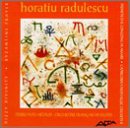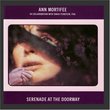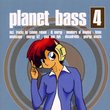| All Artists: Radulescu, Artaud Title: Dizzy Divinity I Members Wishing: 0 Total Copies: 0 Label: Adda Release Date: 2/20/1996 Genres: Special Interest, Classical Style: Number of Discs: 1 SwapaCD Credits: 1 UPC: 723722327421 |
Search - Radulescu, Artaud :: Dizzy Divinity I
CD DetailsSimilar CDs |
CD ReviewsThe mad master of spiritual spectralism Christopher Culver | 11/16/2008 (4 out of 5 stars) "Though this ADDA disc is out of print, the two pieces on it have served for many as an introduction to the music of Horatiu Radulescu (1942-2008) thanks to the Avant-Garde Project. Radulescu is known as one of the founders of the spectral school of composition, his work is much less widely known than that of Gerard Grisey and Tristan Murail. That's indeed a shame, because Radulescu took his spectral interests in a highly individual direction.
If Stockhausen was the loopy mystic of Darmstadt modernism, Radulescu was the hermetic sanyassin of post-serialism. Like Stockhausen, there are occasionally overly grandiose designs and a focus on structures that one can't actually hear in the music while it's played. Unlike Stockhausen's ridiculous cosmology, Radulescu's dreamy metaphysics are pretty engaging. Unlike Grisey and Murail, Radulescu was interested less in decomposing the sound of a given instrument into its spectra and then reassigning the sounds to an ensemble, and more on the gradual shift of energy. Indeed, Radulescu's music feels somehow alive. Take "Byzantine Prayer" for 40 flautists playing 71 flutes (1988). The ensemble slowly elaborates on a theoretical A-spectrum, forming an eery cloud of sound, constantly changing but somehow static throughout the course of the piece. It's a pity we hear the work here only in stereo, for Radulescu disperses the players in order to take advantage of the performance space. Closely related in feel is "Dizzy Divinity" for solo flute (1985). Here the flautist plays crescendi on a successive spectra, only to have each broken by new fingerings where he begins again with the new timbres. At one point, the flautist even sings falsetto, and far from seeming a modernist trope like in e.g. Takemitsu's "Voice", here it contributes significantly to the musical line. "Capricorn's Nostalgic Crickets" for seven flutes (1980) is also a big cloud of sound, but shows an interest in periodicity versus aperiodicity which interested other composers in a spectral vein (Grisey, Norgard). "Frenetico il longing di amare" for three players (1984-87) is rather different work from the others and much more bizarre, although the same concerns of shifting spectral energy remain present. Omnipresent are bass voice (the composer himself) and double bass flute. On top of this weird foundation, which sounds almost like throat-singing, we hear the odd tones of the "sound icon". This is Radulescu's big original invention, a concert grand piano set up on its side and its strings played with bows. While any one of these pieces offers thrilling listening, this can be a repetitive program and it doesn't offer the variety of later works. If you want a Radulescu disc with a decent amount of variety, I'd recommend checking out his Piano Concerto (on a CPO disc), which uses the same spectral techniques as here, but also shows a remarkable inspiration from Romanian folk music. Nonetheless, seek this disc out, from the Avant-Garde Project if not physically. Radulescu deserves wider attention." |




